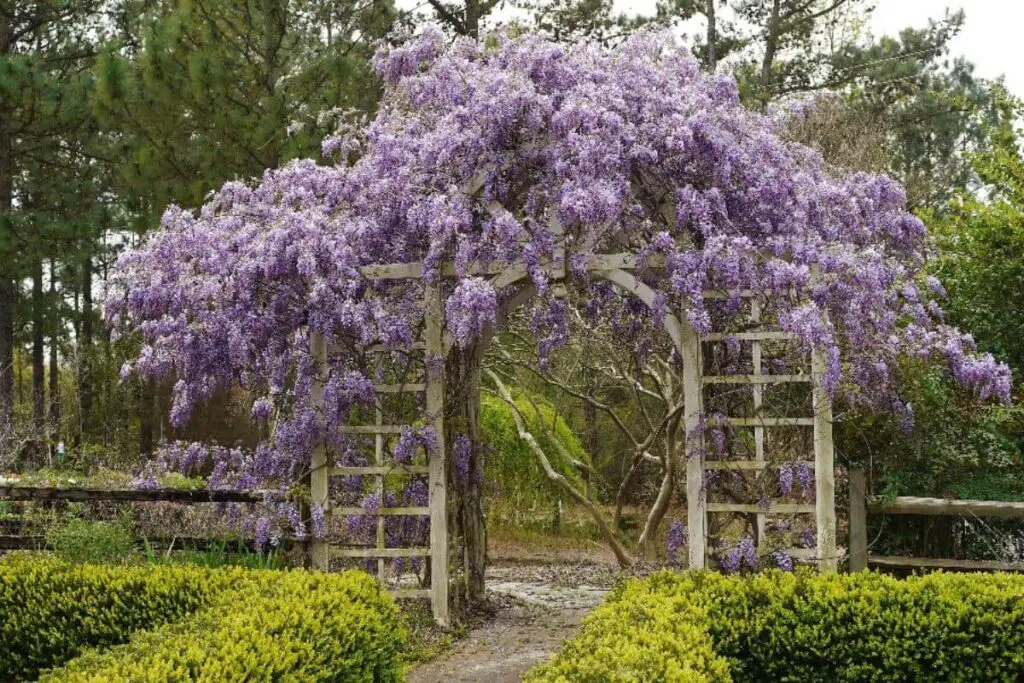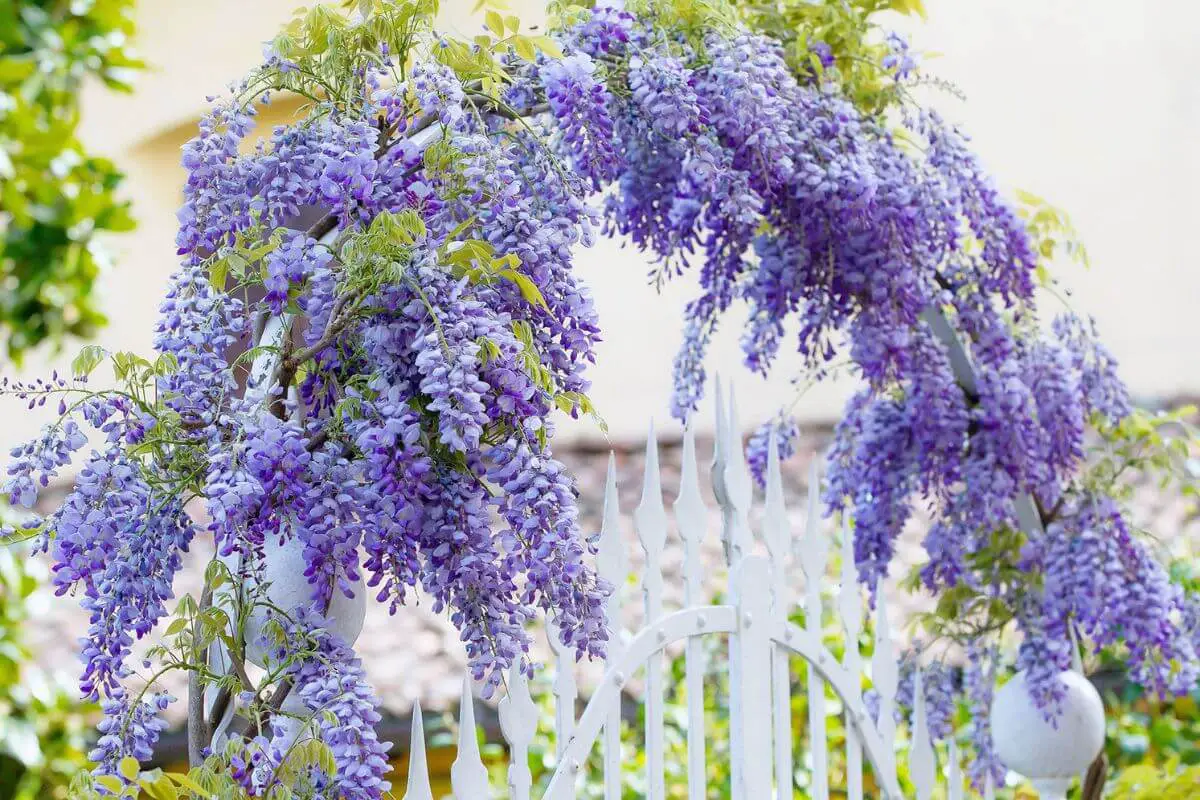Wisteria is a beloved and enchanting vine that can transform any garden into a picturesque haven. Two popular wisteria varieties, “Blue Moon” and “Amethyst Falls,” are often sought after by garden enthusiasts. In this article, we will compare these two wisteria varieties, highlighting their unique features to help you make an informed choice for your garden.
1. Flower Color and Appearance
Blue Moon:
The “Blue Moon” wisteria is renowned for its stunning blue-violet flowers. These cascading, pendulous blooms create a breathtaking display in late spring to early summer, making it a true showstopper in the garden.
Amethyst Falls:
In contrast, “Amethyst Falls” wisteria offers lovely lavender-blue flowers. While they are slightly smaller than those of the “Blue Moon,” they still contribute to a vibrant and visually pleasing garden.

2. Blooming Time
Blue Moon:
“Blue Moon” wisteria typically blooms in late spring, usually in May. Its blooms can last for several weeks, extending the period of enjoyment.
Amethyst Falls:
“Amethyst Falls” wisteria also flowers in late spring but may start blooming a bit earlier than “Blue Moon.” The flowering period is relatively similar, creating a beautiful spectacle.
3. Size and Growth Habit
Blue Moon:
“Blue Moon” wisteria is known for its vigorous growth, often reaching heights of up to 25 to 30 feet. Its twining vines require sturdy support.
Amethyst Falls:
“Amethyst Falls” wisteria is more compact, typically growing to a height of 8 to 10 feet. It’s a great choice for smaller gardens or spaces with limited vertical support.
4. Fragrance
Blue Moon:
One of the most enchanting features of “Blue Moon” wisteria is its sweet, intoxicating fragrance. The aroma is a delightful addition to your outdoor space.
Amethyst Falls:
While “Amethyst Falls” wisteria also emits a pleasant fragrance, it is generally milder in comparison to “Blue Moon.”
5. Hardiness
Blue Moon:
“Blue Moon” wisteria is known for its cold hardiness, making it suitable for a wide range of climates. It can thrive in USDA hardiness zones 4 to 9.
Amethyst Falls:
“Amethyst Falls” wisteria shares a similar hardiness range, thriving in USDA zones 5 to 9. It is also adaptable to various climate conditions.
Conclusion
In the end, the choice between “Blue Moon” and “Amethyst Falls” wisteria largely depends on your personal preferences and garden space. If you desire a profusion of vivid blue-violet blooms and don’t mind a more vigorous grower, “Blue Moon” may be your choice. On the other hand, if you have limited space and prefer a more compact vine with beautiful lavender-blue flowers, “Amethyst Falls” is an excellent option.
No matter which variety you choose, both “Blue Moon” and “Amethyst Falls” wisteria will bring charm and elegance to your garden, making it a place of wonder and beauty.
Get ready to transform your garden with the allure of wisteria!
FAQs
1. Can I grow both “Blue Moon” and “Amethyst Falls” wisteria in the same garden?
Yes, you can grow both varieties in the same garden, but be mindful of their growth habits and provide sufficient space for each to thrive.
2. Do these wisteria varieties require a lot of maintenance?
Wisteria, in general, is relatively low-maintenance once established. Regular pruning is recommended to control their growth and promote flowering.
3. Are these wisteria varieties invasive?
Neither “Blue Moon” nor “Amethyst Falls” wisteria are considered highly invasive, but they can spread if not pruned and managed properly.
4. How can I provide support for these wisteria vines?
Wisteria vines need sturdy support structures like trellises, arbors, or pergolas. Ensure that the support is strong enough to handle their vigorous growth.
5. Can I grow these wisteria varieties in containers or pots?
While it’s possible to grow wisteria in containers, it can be challenging due to their size and growth habit. It’s generally recommended to plant them in the ground for optimal growth.
6. When is the best time to prune these wisteria varieties?
Pruning is typically done in late winter or early spring before new growth begins. This helps maintain their shape and encourages more blooms.
7. Do these wisteria varieties attract pollinators like bees and butterflies?
Yes, both “Blue Moon” and “Amethyst Falls” wisteria varieties attract pollinators, making them beneficial for the local ecosystem.
8. Can I grow these wisteria varieties indoors?
Wisteria varieties are best suited for outdoor cultivation as they require ample sunlight and space to thrive.
9. Do these wisteria varieties have any specific soil requirements?
Wisteria prefers well-draining soil and can adapt to various soil types. Adding organic matter to the soil can improve its fertility.
These FAQs should help you better understand the care and characteristics of “Blue Moon” and “Amethyst Falls” wisteria, allowing you to choose the one that suits your garden and preferences best.



